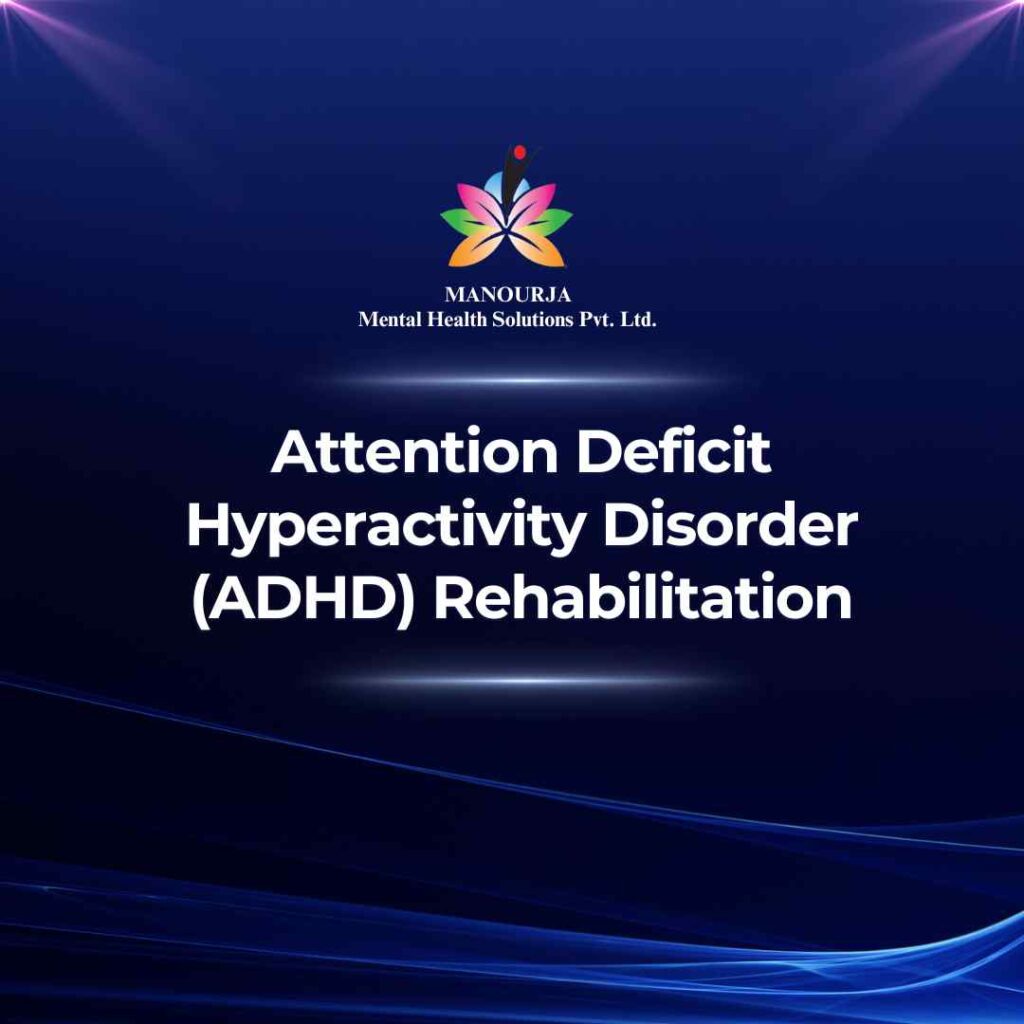Attention Deficit Hyperactivity Disorder (ADHD) Rehabilitation

Attention Deficit Hyperactivity Disorder (ADHD) is a neurodevelopmental disorder characterized by a persistent pattern of inattention and/or hyperactivity-impulsivity that interferes with functioning or development.
- Inattention: Difficulty sustaining attention, careless mistakes in schoolwork, difficulty organizing tasks, prone to losing things, and easily distracted by extraneous stimuli.
- Hyperactivity: Fidgeting, leaving seat in situations when remaining seated is expected, running or climbing inappropriately, inability to play quietly, and always being ‘on the go.’
- Impulsivity: Blurting out answers before questions have been completed, difficulty waiting turns, and interrupting or intruding on others.
Indicators for Outpatient Psychosocial Rehabilitation (OPD)
- Mild to Moderate Symptoms: Individuals with less severe symptoms who can manage daily activities relatively well but could benefit from regular support to improve their quality of life and functioning.
- Stable Home Environment: The presence of a supportive environment that can follow through with therapeutic strategies outside of a clinical setting.
- Commitment to Treatment: Willingness to attend regular appointments and engage actively with therapeutic interventions.
Indicators for Inpatient Psychosocial Rehabilitation (IPD)
- Severe Symptoms: Extremely disruptive behavior affecting all areas of life, including school, work, and home.
- Risk of Harm: If there’s a risk to themselves or others due to impulsivity and hyperactivity.
- Comorbid Disorders: Presence of other mental health disorders requiring more intensive, structured treatment and monitoring.
Factors Influencing the Decision
- Severity of the Condition: The impact of ADHD symptoms on an individual’s ability to function in daily life.
- Presence of Additional Psychiatric Conditions: Other co-existing conditions might necessitate a more controlled treatment environment.
- Effectiveness of Previous Treatments: The success or failure of outpatient treatments can determine the need for more intensive intervention.
How Psychosocial Rehabilitation Aids in Treating ADHD
Psychosocial rehabilitation focuses on improving attention, managing hyperactivity, and reducing impulsivity through structured therapeutic interventions, thereby enhancing overall functioning.
Techniques and Approaches Utilized at MANOURJA
- Behavioral Therapy: Focuses on managing specific behaviors and developing strategies to change them.
- Cognitive Behavioral Therapy (CBT): Helps in managing challenging thoughts and behaviors associated with ADHD, improving emotional regulation and developing coping strategies.
- Skills Training: Teaches time management, organizational skills, and effective problem-solving strategies.
- Parent Training: Educates parents on how to support their child effectively through structured routines and discipline strategies.
- Social Skills Training: Aims to improve interpersonal relations and socially appropriate behaviors.
Steps Followed at MANOURJA for Rehabilitation
- Assessment: Comprehensive evaluation to confirm the diagnosis of ADHD and identify specific challenges and strengths.
- Individualized Treatment Plan: Development of a tailored plan that addresses the unique needs of the individual with ADHD.
- Implementation of Interventions: Engaging the individual in various therapeutic activities designed to improve specific symptoms associated with ADHD.
- Continuous Monitoring and Adjustment: Regular review and modification of the treatment plan based on the individual’s progress.
- Aftercare Planning: Strategies and support systems are established to maintain the gains achieved during rehabilitation.
“Embrace your unique focus; each day is a new chance to shine.”
